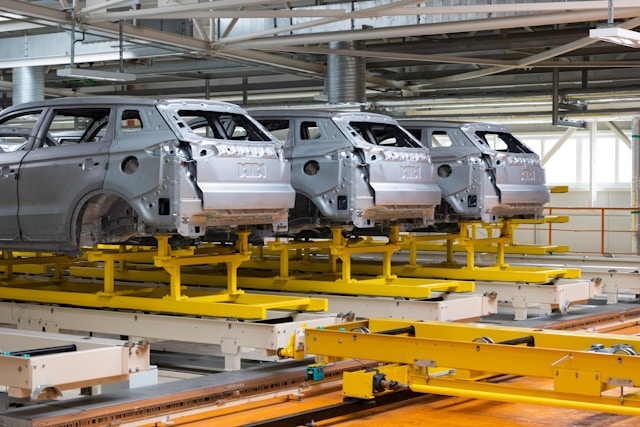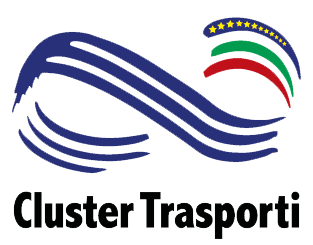The automotive market in Italy and Europe analyzed by the National Transport Cluster

Published 5 May 2025
The automotive industry in Italy and Europe is going through a serious crisis that is destabilizing the quality of mobility for Italians and the path to decarbonization. Looking at the numbers documented in a position paper prepared by the National Transport Cluster, the new car market in Italy has gone from 2 million new registrations in the pre-covid period to one and a half million in recent years (1.56 million in 2024, despite a Government allocation of almost 1 billion euros in incentives).
SUVs dominate the Italian market
In particular, since 2019, the Italian market has lost 370 thousand vehicles, or 19% of its value, and the cars that are sold are the largest and heaviest, with SUVs dominating the market with a share of 57%. The car market has evolved towards electrification and today hybrid cars account for 36% of registrations, but these are “mild” hybrids, that is, cars equipped with a thermal engine supported by a small electric engine and are not rechargeable. In Italy, however, pure electric cars, the so-called BEVs (Battery Electric Vehicles), are struggling a lot and are steadily around 4% of new registrations (similar values for Plug-in rechargeable hybrids). Similar trends are found in Europe, even if the share of pure electric vehicles is much higher than the Italian one, on average 15%: in any case, these are shares far from the optimistic market forecasts of the early 2020s, and the related commitments of manufacturers, many of whom had committed (and invested) to produce only BEV cars in Europe by 2030.
Another determining factor is the costs and disposable income of families. Cars today cost much more than 10 years ago and, at the same time, the disposable income of Italian families has unfortunately decreased. In ten years, the average price of registered vehicles has gone from 19.3 thousand euros to 29.9 thousand euros.
The cost of electricity
Electricity in Italy has one of the highest costs in Europe. Pure electric vehicles, which cost on average 35% more than equivalent internal combustion models, lead to savings in terms of energy that offsets the higher cost, only if the electricity is purchased with domestic contracts and if the annual mileage is well above average. For a medium-displacement car even with over 20,000 km of mileage per year there is no saving on the total cost of purchase + operation if the electricity is purchased only from the column. In fact, the average cost of energy at the column is approximately double that of domestic charging for “slow” columns and triple for “fast” ones. It is therefore not just a problem of a shortage of charging stations (the ratio of electric cars/charging stations is comparable if not better than that of many European countries), but a question of energy costs and type of residence.
Traffic on motorways in 2024 reached its highest level ever, and the same is true everywhere: petrol and diesel sold in Italy in 2024 exceeded the values of 2019. The percentage of people who travel by car instead of public transport increases significantly as income and the size of the urban centre of residence decrease. Those with a lower income tend to live in centres where the public transport service is weak or completely absent.
The used car market is growing
So how can a market that sells fewer new cars be reconciled with an increasing demand for mobility on cars? With the used car market. In the last year, 2.9 million changes of ownership of used cars (excluding mini-transfers) were made in the face of an increase in prices, 4% more than the previous year and a good +40% compared to 2019. Furthermore, used cars are also very old and 50.4 of the changes of ownership concern vehicles over 10 years old. The consequence of this trend is that the average age of the fleet in circulation in Italy has grown enormously. So we drive older cars that pollute more and are less safe because they do not benefit from all the technological developments that have been adopted by law on all new-generation cars. At the same time, the European automotive industry is in crisis because it sells fewer cars and fears the growing competition from Chinese manufacturers who are able to offer cars of ever-better quality at prices that without duties would be even more competitive than they already are today.
The reasons for the crisis
The reasons for the crisis in the automotive sector certainly include the two crises of Covid and the war in Ukraine which have led to an increase in the costs of raw materials and energy. The EU’s forcing of the transition towards all-electricity probably had an impact, without taking into account the costs and times required for industry and consumers to adapt to this transition.
Nor has the proliferation of constantly evolving, difficult to follow, rules, dates and limits helped.
Conclusions
In conclusion, it will therefore be important to focus on a car market based on the downsizing of vehicles, with smaller and less expensive cars and therefore more accessible to the middle classes. Less expensive alternatives to electric cars will also be needed based on the principles of technological neutrality that guarantees the survival of the thermal engine in Europe with the use of renewable fuels.
Finally, European legislation for the automotive sector (cars but also commercial and heavy vehicles) must be reviewed with an “eco-rational” approach that focuses on environmental sustainability, taking into account social and economic-industrial sustainability and evaluating the actual repercussions on the market and the real impacts on pollution and safety.
No less important will be digital technologies (including the application of AI, sensorization and management of big data, software defined vehicles) and new shared services accompanied by increasingly automated and connected vehicles that are the great challenge of the future but that require increasing investments to be able to open up new market scenarios.
You can download the document here


